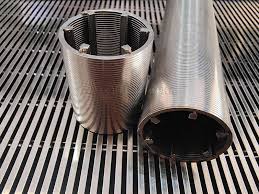
What is a wedge wire? Why is a wedge wire needed?

A product that is widely used in the manufacturing of screens is the wedge wire. Wedge wire is also popularly known as a profile bar, and it is a type of screen wire. The shape of the wedge wire is triangular and has numerous options in terms of height, width, radius on both – corners and on the nose. Though it looks like the wedge wire is a very straightforward product, in reality, it takes utmost effort, attention, and care while designing the wedge wire with given specifications. The end-user must also be very specific and select a relevant design for the screen that suits its intended application.
Materials used to make a Wedge Wire.
Depending on the application of the wedge wire, the materials and alloy used to make it may vary. If its application is in the gas and oil market, the wedge wire would demand different alloys and materials, whereas filtering fluid-like beverages would require another material. Similarly, the food industry will demand different ones. The selection of an alloy varies depending on:
- Elements needed to be added to the wire before it becomes ready for the market
- Process of manufacturing
Defending on these factors, the manufacturing of screens uses a variety of different alloys. Usually, the wedge wire is manufactured using Inconel (a high-performing alloy), red metals, aluminum, carbon steel, duplex grades, stainless steel, etc. Assistance in selecting the suitable materials and alloy, getting suggestions, raising the query, and solving the problems with the help of a metallurgist or technical expert is always preferred.
Usually, these are alloys that are typically used:
- Nickel alloys such as Inconel, Monel 400, and Hastelloy,
- Titanium
- 300 Carbon Steel
- 2205 Duplex Stainless Steel
- Aluminum
- 400 Series Stainless Steel
- Stainless Steel
- Nitronic
On selecting the required alloy, there must be an establishment of the appropriate size of the wedge wire for its application in the next step.
Wedge Wire Applications
Usually, two or three varieties of screens are manufactured in wedge wire screens. The most widely used varieties are cylindrical screens & flat-screen aluminum. The cylindrical type is further divided into round screens and basket screens. Each wire finds its application and has taken over many different industries such as:
- Mineral Processing
- Microbrewery Beer Tanks
- Oil and Gas
- Intake of Water Reservoir
- Paper and Pulp Manufacturing
- Applications in Architecture
- Food Processing
Quality Aspects
To get a better quality of a wedge wire, the assessment is done to check if it is suitable for a particular application. Physical factors such as consistency, surface finish, and uniformity are considered within the wire. The continuity in the product’s finish is essential for a screen, especially for architectural applications. Since scratches and defects are visible on its wire, the work needs to be more precise.
Another important aspect while making a successful wedge wire is having a consistent spool of the product. If the spool has variations, it will mean a lack of consistency in the slots of its wire screen.
Wrap Up
The wedge wires usually have acute tolerance, but at the same time, it is not in the hands of the end-user to finalize its wire’s shape. This is because meeting the mechanical properties and nose and corner measurements is equally crucial.
For further reading: skooknewsmagazine.com